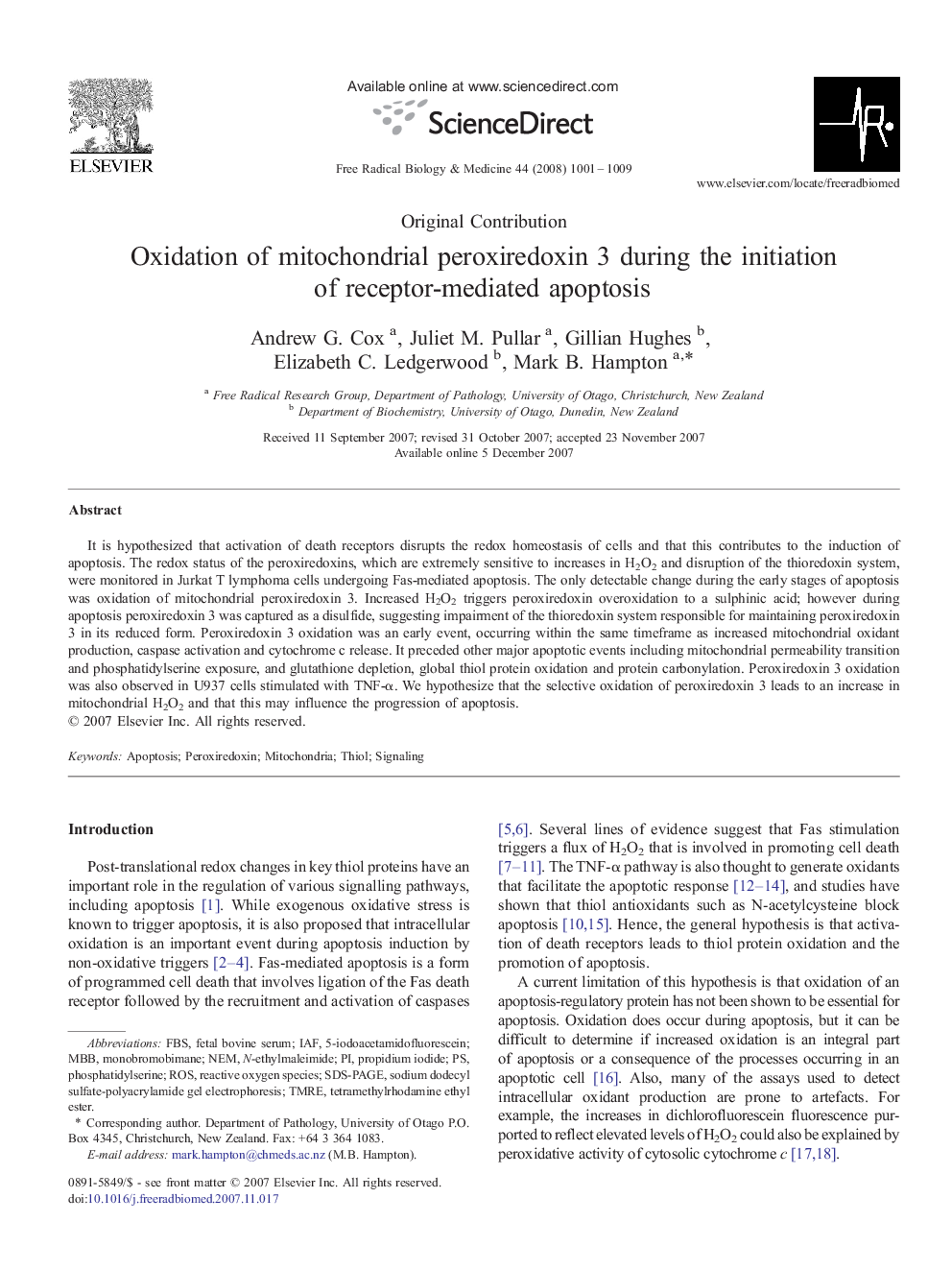| Article ID | Journal | Published Year | Pages | File Type |
|---|---|---|---|---|
| 1910786 | Free Radical Biology and Medicine | 2008 | 9 Pages |
It is hypothesized that activation of death receptors disrupts the redox homeostasis of cells and that this contributes to the induction of apoptosis. The redox status of the peroxiredoxins, which are extremely sensitive to increases in H2O2 and disruption of the thioredoxin system, were monitored in Jurkat T lymphoma cells undergoing Fas-mediated apoptosis. The only detectable change during the early stages of apoptosis was oxidation of mitochondrial peroxiredoxin 3. Increased H2O2 triggers peroxiredoxin overoxidation to a sulphinic acid; however during apoptosis peroxiredoxin 3 was captured as a disulfide, suggesting impairment of the thioredoxin system responsible for maintaining peroxiredoxin 3 in its reduced form. Peroxiredoxin 3 oxidation was an early event, occurring within the same timeframe as increased mitochondrial oxidant production, caspase activation and cytochrome c release. It preceded other major apoptotic events including mitochondrial permeability transition and phosphatidylserine exposure, and glutathione depletion, global thiol protein oxidation and protein carbonylation. Peroxiredoxin 3 oxidation was also observed in U937 cells stimulated with TNF-α. We hypothesize that the selective oxidation of peroxiredoxin 3 leads to an increase in mitochondrial H2O2 and that this may influence the progression of apoptosis.
